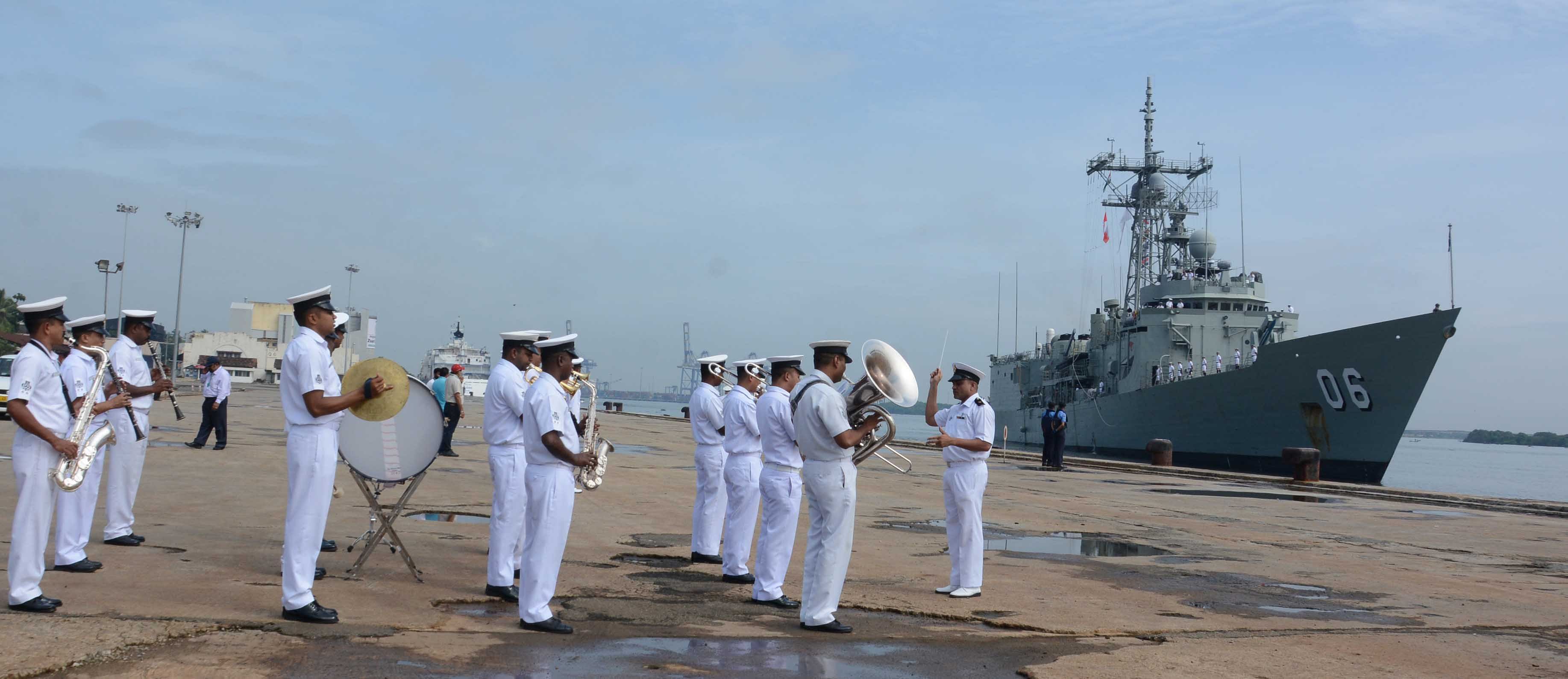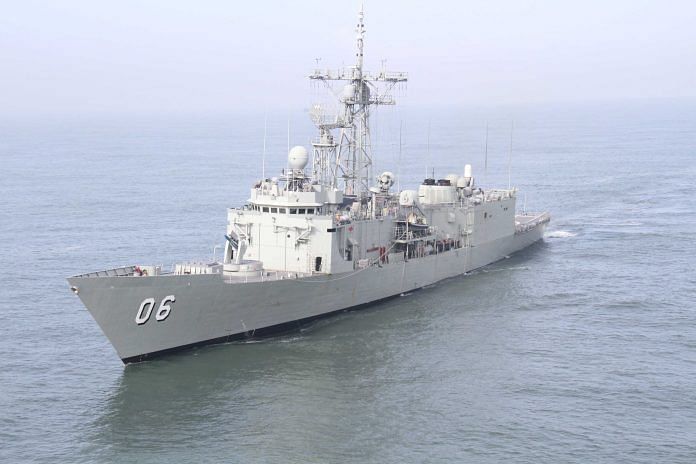Frigate RAN Newcastle is docked in Kochi, indicating the Australian Navy was prepared for a last minute entry if India changed its mind and allowed it to join the exercise.
For the Royal Australian Navy (RAN) ship Newcastle currently docked in Kochi, the Bay of Bengal is a sea too far – a short sail away is the venue of the largest naval war games being conducted in this part of the word the frigate was hoping to participate in.
Converging currently off the other coast of India for Exercise Malabar are the biggest naval combatants from India, the US and Japan, ranging from nuclear powered aircraft carriers to stealthy submarines, marine fighter jets and cutting edge destroyers. India will for the first time deploy aircraft carrier INS Vikramaditya for an international war game.
The Australian warship – an Adelaide-class guided-missile frigate that displaces over 4,000 tons – would have been an integral part of the exercise if a go-ahead had been given by New Delhi. The deployment to Kochi – timed perfectly for the start of the Malabar exercise from 7 July – is an indication that the Australian Navy was prepared even for a last minute entry.
For the past few years, Australia has openly expressed its keenness to take part in Malabar and this time around was perhaps at its closest to getting an invite yet. The backdrop of the Australian question is interesting – in the first multination edition of the Malabar exercise that took place in 2007, Australia and Singapore were core members.
The exercise – also conducted in the Bay of Bengal – however kicked up a major row with China protesting and questioning the “intent” of the war game. Following Beijing’s missives, Australia pulled out from further editions of the exercises.
However, much water has flowed under the bridge since and while Australia is now keen to return, India has shown reluctance for the past three years. This, most believe, is to do with a strategic decision to not conduct quadrilateral or four-nation exercises that may be seen as focused against China.
“India is very comfortable with Australia at this point and is happy with AUSINDEX. Australian ships also are currently making port calls in India so this has very little to do with keeping Australia away from the exercise and more to do with India’s strategic decision on quadrilateral exercises,” Darshana Barua, Research Analyst at Carnegie India feels.
The Indian dilemma could also originate from the simple question – what would New Delhi gain by projecting a quadrilateral front, even if for an exercise.
“Yes, a quadrilateral will send a strong message to China but to what extent? I suppose India is uncertain about its strategic gains from such a move at this point and sees the quadrilateral more as a symbolic gesture than a strategic necessity,” Barua says.

While these questions may take time to get answered, Commander MD Sirois will enjoy his Kochi visit with the crew of the Newcastle until the end of this week. The crew will be visiting Indian facilities like Navigation & Direction, Anti- Submarine Warfare School and Damage Control Training Facility ‘Avinash’.
The farewell on 7 July will be with a passage exercise with Indian Navy ships off the Kochi coast.






